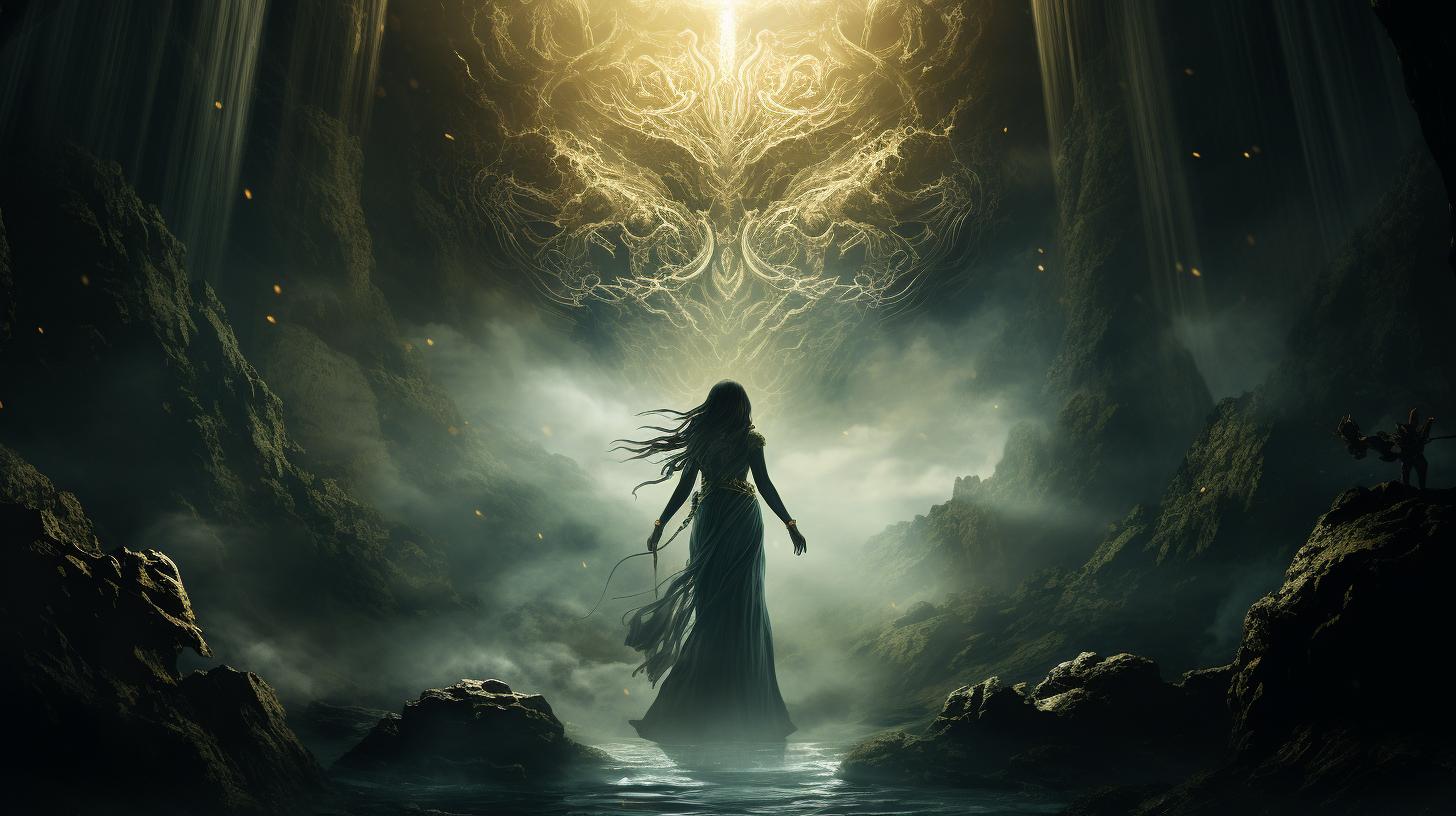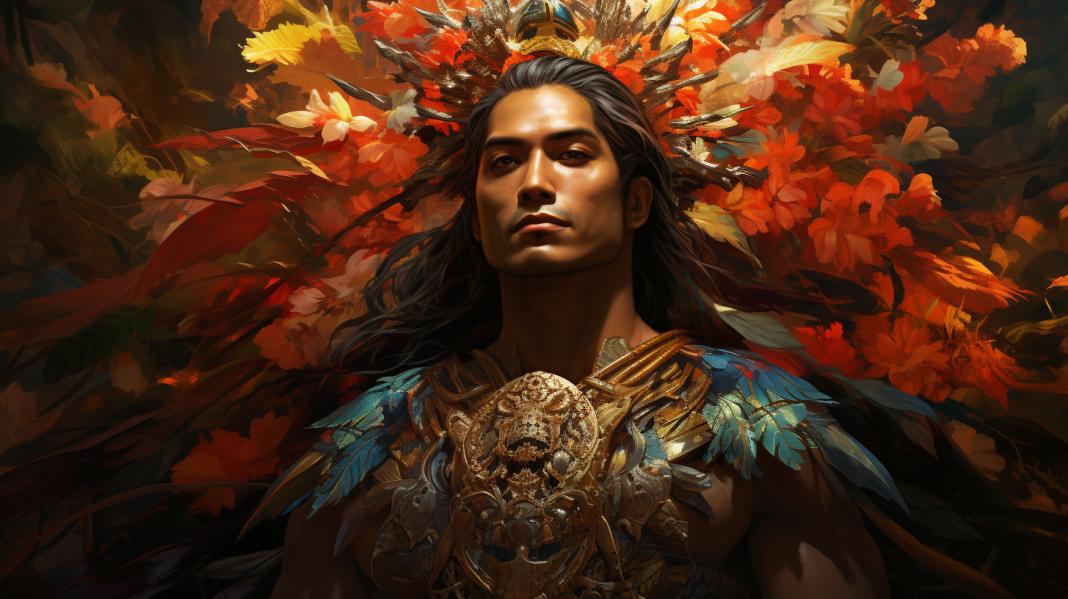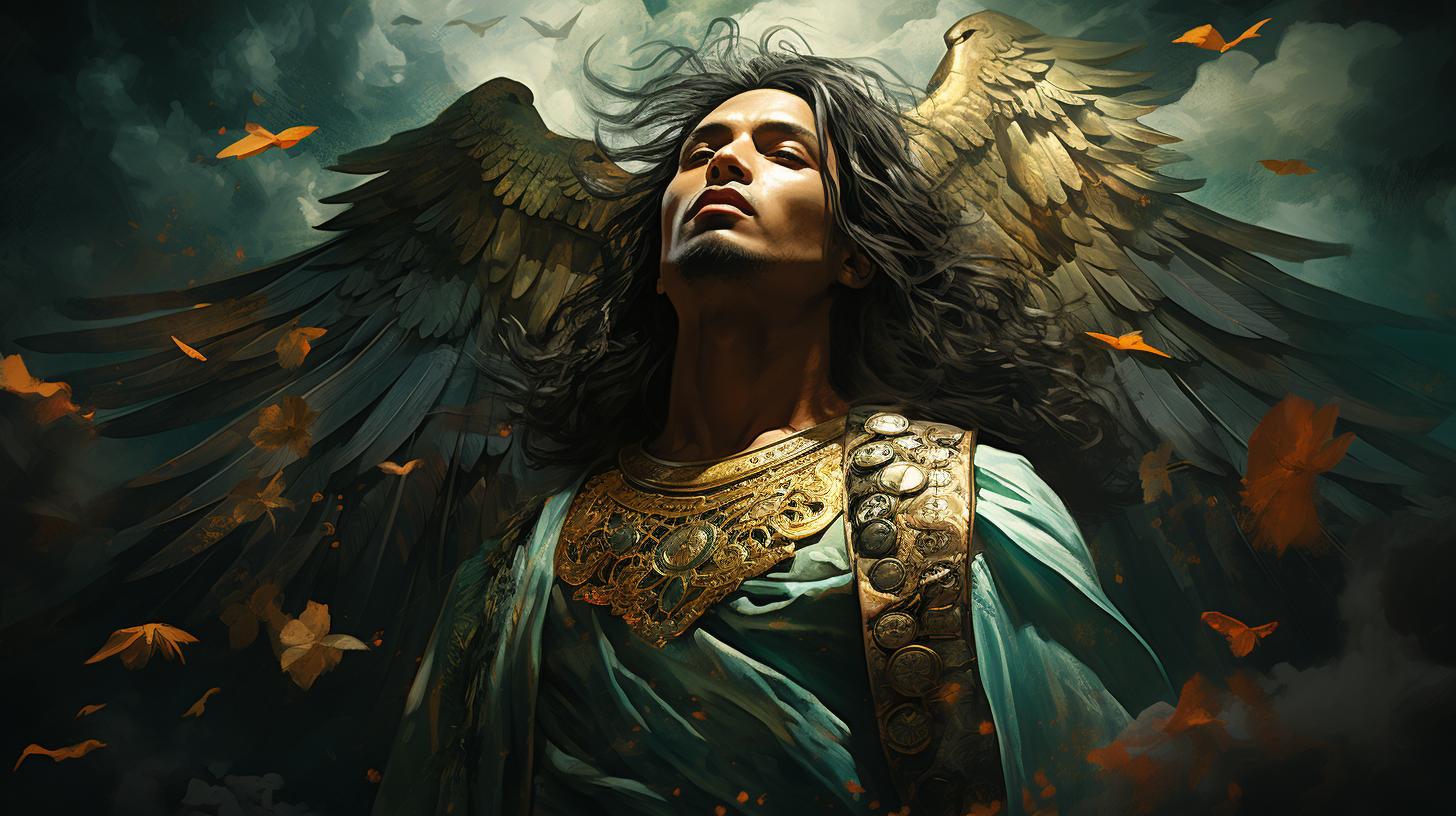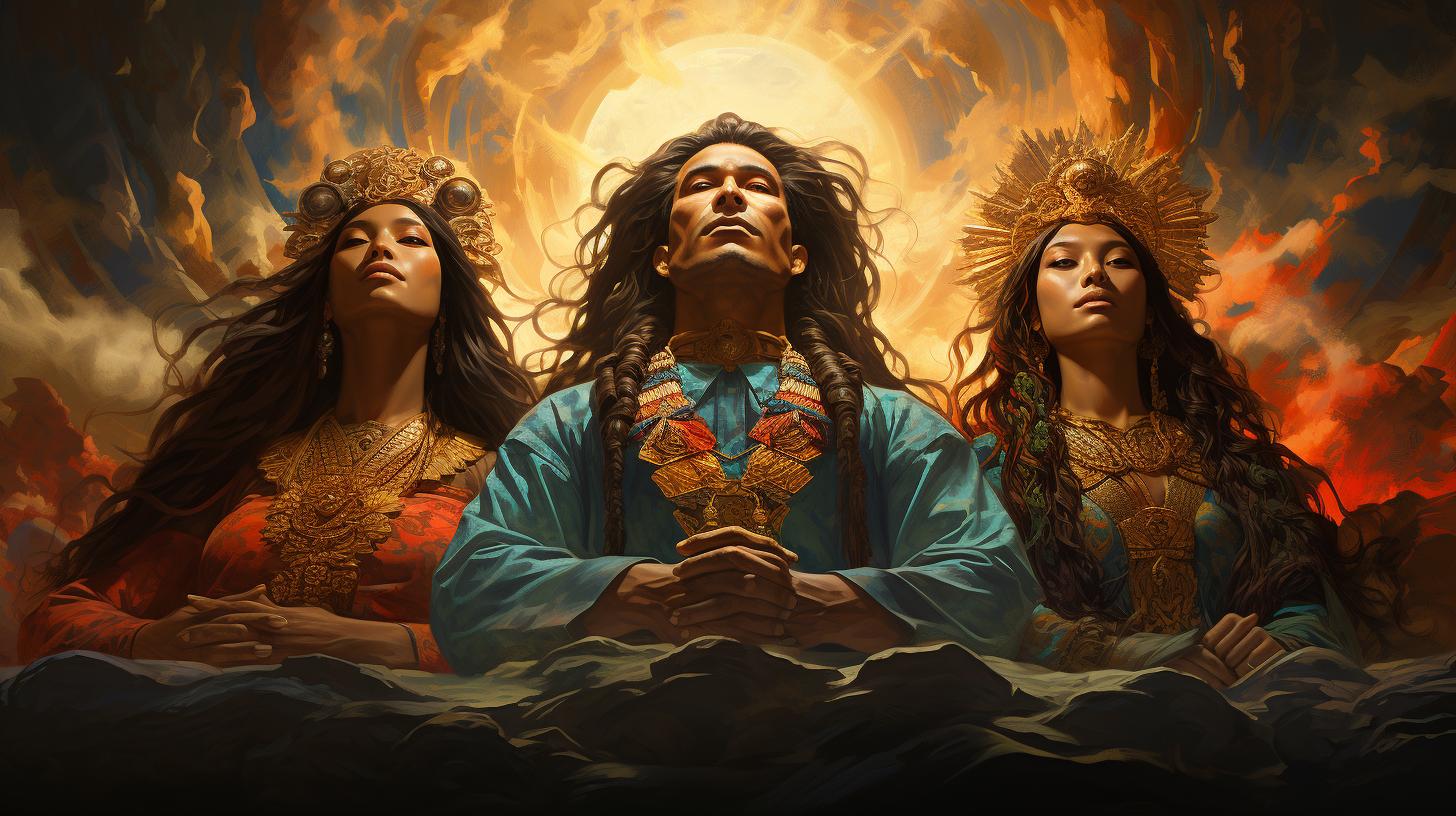Apolaki: The Radiant God of the Sun
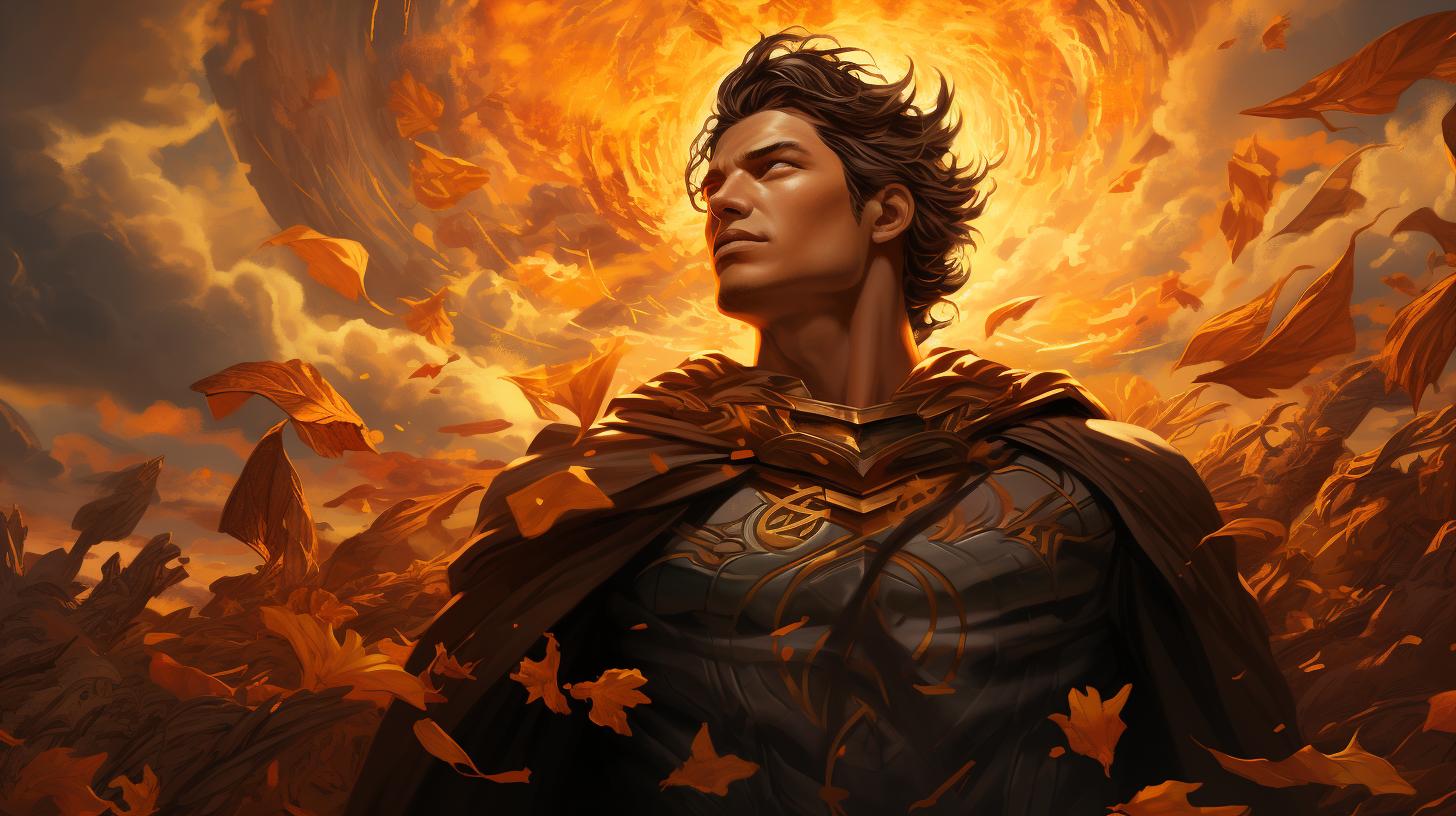
The ancient beliefs of the Tagalog people revolved around Bathala, the supreme deity and creator of the universe. Within this pantheon, Apolaki stood as the radiant God of the Sun.
Apolaki’s mythology and his significance in Filipino culture are explored in this article, shedding light on his connection to other deities, rituals dedicated to him, and his role in contemporary society.
Additionally, his association with the Moon Goddess and his symbolism of power and protection will be discussed, along with his portrayal in various forms of art and popular culture.
Exploring the Ancient Tagalog Beliefs
In this section, we delve into the ancient beliefs of the Tagalog people, unveiling their rich religious heritage and customs.
The Tagalog religious beliefs have their origins deeply rooted in their history and culture, shaping their worldview and understanding of the divine.
Origins of the Tagalog Religious Beliefs
The origins of the Tagalog religious beliefs can be traced back to the ancient times, reflecting the indigenous spirituality of the people. The Tagalogs held a deep reverence for nature and the forces that governed it.
It was within the context of this reverence that their religious beliefs emerged and evolved over time.
The Supreme Deity Bathala
A central figure in the Tagalog religious pantheon is Bathala, the supreme deity who was regarded as the creator and ruler of the universe. Bathala stood above all other deities, representing transcendence and supreme power.
The Tagalogs worshipped Bathala with reverence and sought guidance and blessings from this divine being.
Bathala’s Role as the God of Sun
Within the pantheon of beliefs, Bathala also held the significant role of the God of the Sun, known as Apolaki. Apolaki represented the radiant and life-giving qualities of the sun.
The Tagalogs recognized the vital role played by the sun in sustaining life on earth, and thus, Apolaki was worshipped for blessings, abundance, and protection.
The ancient Tagalog beliefs regarding Bathala and Apolaki provide a fascinating insight into the spiritual and religious practices of this ancient culture.
The reverence for nature and the divine, as embodied by Bathala and Apolaki, shaped the Tagalogs’ worldview and influenced their rituals, ceremonies, and overall understanding of the cosmos.
Understanding Apolaki: The Radiant God of Sun
As we delve deeper into the ancient beliefs of the Tagalog people, we encounter Apolaki, the radiant God of Sun.
In this section, we will explore the mythology and stories surrounding Apolaki, shedding light on his significance in the Filipino culture and belief system.
Mythology and Stories Surrounding Apolaki
In the rich tapestry of Tagalog mythology, Apolaki emerges as a prominent figure. He is revered as the deity responsible for the warmth and light of the sun, bestowing life and energy upon the world.
Legends depict Apolaki as a majestic and powerful god, adorned with golden armor that reflects his brilliance. Stories describe him riding a chariot across the sky, bringing forth the dawn and illuminating the heavens.
Apollo, the Greek god of the sun, finds a parallel in Apolaki, as both embody the radiant energies of the celestial body they represent. However, Apolaki’s persona is uniquely crafted within the context of Filipino mythology, intertwining with local beliefs and cultural practices.
Apolaki’s Connection to the Earth and the Sky
Apolaki’s influence extends beyond his role as the God of Sun. He is deeply interconnected with the realms of the earth and the sky, bridging the gap between the celestial and earthly domains.
In this symbiotic relationship, Apolaki’s radiance sustains life on earth, nurturing the vegetation and providing warmth to the creatures that inhabit the land.
Furthermore, Apolaki’s connection to the sky represents his overarching influence and authority.
Just as the sun dominates the daytime sky, Apolaki rules as a divine force over the cosmic order. His powers are invoked to bring blessings, protection, and prosperity, as his benevolence is believed to extend to all who revere him.
Apolaki’s Symbols and Representations
The portrayal of Apolaki in art and mythology is often attributed to various symbols and representations. The sun, with its powerful rays and life-giving warmth, becomes the primary emblem of Apolaki, signifying his transcendent power and life-affirming energy.
Depictions of Apolaki often highlight his regal stature and radiant countenance. He is portrayed as a god of strength and protection, wielding a golden staff or spear that symbolizes his authority and guardian role.
Apolaki’s presence is further accentuated by the use of vibrant colors such as gold and orange, evoking the brilliance of the sun and its life-sustaining qualities.
In conclusion, gaining a deeper understanding of Apolaki, the radiant God of Sun, allows us to appreciate his importance in Tagalog mythology and the Filipino cultural heritage.
His mythology and connections to both the earth and the sky provide a fascinating glimpse into the ancient beliefs and reverence for celestial deities within the Tagalog tradition.
Apolaki in Philippine Culture and Beliefs
In the rich cultural tapestry of the Philippines, Apolaki holds a significant place as the God of the Sun.
His presence in pre-colonial Philippines was highly esteemed, and his influence extended beyond the realm of mythology. Apolaki played a crucial role in shaping the beliefs and practices of the ancient Tagalog people, leaving an indelible mark on their cultural and religious traditions.
Importance of Apolaki in Pre-Colonial Philippines
Apolaki’s prominence in pre-colonial Philippine society was a testament to the revered status he held among the Tagalog people. As the God of the Sun, Apolaki was deeply connected to the cycles of nature, symbolizing life, warmth, and vitality.
His radiance permeated every aspect of daily life, from agriculture and fertility to overall well-being. The Tagalog people believed that Apolaki’s favor and blessings were essential for a prosperous and harmonious existence.
Rituals and Ceremonies Dedicated to Apolaki
To honor and pay homage to Apolaki, the ancient Tagalogs performed various rituals and ceremonies. These sacred practices sought to establish a connection with the divine and seek Apolaki’s favor and protection.
Rituals often involved dances and music, accompanied by rhythmic chants and offerings of flowers, fruits, and other symbolic items. These rituals were meant to invoke Apolaki’s presence, express gratitude for his beneficence, and seek guidance for the community’s well-being.
Apolaki as a Symbol of Power and Protection
Apolaki’s association with power and protection was deeply ingrained in the psyche of the Tagalog people. As the radiant God of the Sun, he was seen as a guardian and defender of their land and people.
Apolaki’s strength and might provided a sense of security and resilience amidst the challenges and uncertainties of life. He was believed to repel malevolent forces and bring blessings, ensuring the prosperity and well-being of the community.
In conclusion, Apolaki’s role in Philippine culture and beliefs was integral in pre-colonial times. His significance as the God of the Sun, the rituals performed in his honor, and his symbolism of power and protection underscored the profound impact he had on the Tagalog people’s spiritual and cultural landscape.
Apolaki’s Association with Other Deities and Cosmic Entities
Apolaki, the radiant God of the Sun, is not only a powerful figure in Filipino mythology but also shares intriguing relationships with other deities and cosmic entities. Among these connections are his special bond with the Moon Goddess and his association with the Sun and War.
Relationship Between Apolaki and the Moon Goddess
The harmonious interplay between Apolaki, the God of the Sun, and the Moon Goddess forms a significant aspect of Tagalog mythology. These celestial beings are believed to share a divine connection, symbolizing the balance of light and darkness that exists in the world.
The Tagalogs perceived Apolaki as the brother of the Moon Goddess, with their cosmic partnership representing the cyclical nature of day and night. As the Sun illuminates the day, the Moon takes over the celestial stage during the night, symbolizing the ebb and flow of light and darkness in the universe.
Furthermore, tales are woven around the interdependence of Apolaki and the Moon Goddess, emphasizing their crucial roles in maintaining cosmic order. Their dynamic relationship showcases the interconnectedness of natural forces that regulate the passage of time and shape the rhythm of life.
Apolaki’s Connection to the Sun and War
In addition to his association with the Moon Goddess, Apolaki is intrinsically connected to both the Sun and the realm of War. As the God of the Sun, Apolaki symbolizes the radiance and life-giving power bestowed upon the world.
The Sun’s warmth and brilliance are believed to originate from his divine presence, illuminating and nurturing the earth.
Moreover, Apolaki’s connection to War echoes his significant role as a deity associated with strength, valor, and protection.
In Tagalog mythology, he is revered as a patron of warriors, guiding them through battle and empowering them with courage and resilience.
Legends depict Apolaki’s intervention during critical moments of conflict, lending his divine energy to those fighting for justice and honor.
He is thought to be a source of inspiration and a driving force behind the triumph of warriors, highlighting his embodiment of power and victory.
As Filipinos continue to celebrate their rich cultural heritage, the enduring presence of Apolaki resonates through various artistic expressions and religious practices.
The interconnectedness between Apolaki and other deities and cosmic entities serves as a testament to the depth and complexity of Tagalog mythology, offering insights into the spiritual beliefs that have shaped Filipino culture throughout history and into the present day.
Influence of Apolaki in Contemporary Filipino Society
Apolaki in Modern Religious Practices
Apolaki holds a significant place in modern Filipino religious practices. Many Filipinos, especially those who embrace pre-colonial beliefs, continue to venerate Apolaki as a powerful deity. They offer prayers and rituals to seek his blessings for prosperity, protection, and guidance.
Apolaki’s presence can be felt in traditional ceremonies and gatherings, where devotees pay homage to his radiant energy and seek his favor in their lives.
Apolaki in Art, Literature, and Popular Culture
Apolaki’s influence extends beyond religious practices and permeates various aspects of Filipino art, literature, and popular culture.
Artists and writers draw inspiration from Apolaki’s symbolism and attributes to depict him in their creations. Paintings, sculptures, and literary works often showcase Apolaki’s majestic presence, radiating strength and vitality. Moreover, Apolaki’s character and stories are frequently featured in contemporary novels, films, and songs, keeping his mythos alive and captivating audiences with his mythological adventures.
Furthermore, Apolaki’s popularity transcends traditional art forms and reaches modern media, including digital platforms and social media. Many Filipinos express their admiration for Apolaki through fan art, online discussions, and storytelling.
These contemporary expressions demonstrate the enduring influence of Apolaki as a cultural icon and show how his significance continues to resonate with the younger generations, connecting them to their rich heritage and inspiring creativity.
In conclusion, Apolaki’s impact in contemporary Filipino society is evident in both religious practices and cultural expressions. As devotees continue to honor him and seek his blessings, and artists continue to celebrate his majestic presence through diverse mediums, Apolaki remains an integral part of the Filipino cultural landscape, serving as a symbol of strength, radiance, and cultural identity.
.












